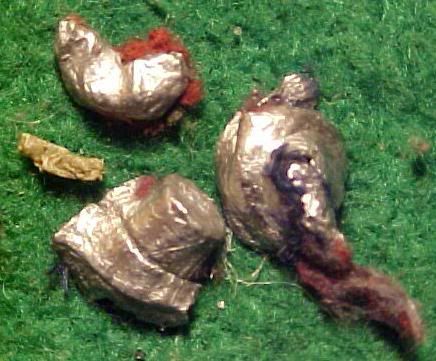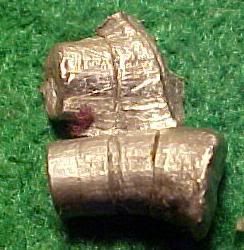Well, I tried the 'mini loading' block idea (just a test simulating one) and yes, we have a winner! This is going to work! And then, just because I cannot leave well enough alone, I had to try sleave patching a lubed boolit. Here it is.
I should mention that I strategically placed the joint out of sight!(It had opened a little - some paper size corrections needed!)
Compare it to an un-lubed one
Oops! The sleave is in the wrong position! (It happens if one is not careful).

|
   
   
|


|






 Reply With Quote
Reply With Quote











